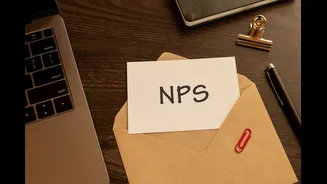What is the story about?
The Pension Fund Regulatory and Development Authority (PFRDA) has revised rules for the Corporate National Pension System (NPS), aiming to bring more clarity on how employers and employees decide pension fund managers and investment choices.
Under the updated framework, employers and employees in joint-contribution setups must now take all decisions on pension fund selection and asset allocation through a formal mutual agreement.
This applies to cases where both contribute, the employer contributes higher amounts, or only the employer contributes.
PFRDA has also mandated annual reviews of the initially chosen pension fund. Any switch must follow conditions outlined in the mutual agreement, with an emphasis on NPS’s long-term nature.
Employers are expected to evaluate long-horizon performance trends—typically 20–30 years—rather than reacting to short-term market movements.
The regulator stressed that consultation and financial education should form a core part of this process.
Employees will continue to have flexibility: they may make voluntary contributions to common schemes or options under the Multiple Scheme Framework (MSF), irrespective of the co-contribution arrangement. The mutual agreement must also offer adequate scheme choices so that employees with varying risk appetites can invest appropriately.
To manage disputes, PFRDA has defined a grievance process. Employees must first approach their company’s HR department, and escalations will be allowed only if they attach proof of inaction.
Corporates may also choose to give full discretion to employees to select their pension fund or scheme, bypassing the mutual agreement altogether.
Operationally, employers must work closely with Points of Presence (PoPs) to provide NPS-related services, and PoPs must communicate agreed choices to Central Recordkeeping Agencies (CRAs) following established protocols. CRAs are prohibited from making any system changes without explicit employer instructions.
Under the updated framework, employers and employees in joint-contribution setups must now take all decisions on pension fund selection and asset allocation through a formal mutual agreement.
This applies to cases where both contribute, the employer contributes higher amounts, or only the employer contributes.
PFRDA has also mandated annual reviews of the initially chosen pension fund. Any switch must follow conditions outlined in the mutual agreement, with an emphasis on NPS’s long-term nature.
Employers are expected to evaluate long-horizon performance trends—typically 20–30 years—rather than reacting to short-term market movements.
The regulator stressed that consultation and financial education should form a core part of this process.
Employees will continue to have flexibility: they may make voluntary contributions to common schemes or options under the Multiple Scheme Framework (MSF), irrespective of the co-contribution arrangement. The mutual agreement must also offer adequate scheme choices so that employees with varying risk appetites can invest appropriately.
To manage disputes, PFRDA has defined a grievance process. Employees must first approach their company’s HR department, and escalations will be allowed only if they attach proof of inaction.
Corporates may also choose to give full discretion to employees to select their pension fund or scheme, bypassing the mutual agreement altogether.
Operationally, employers must work closely with Points of Presence (PoPs) to provide NPS-related services, and PoPs must communicate agreed choices to Central Recordkeeping Agencies (CRAs) following established protocols. CRAs are prohibited from making any system changes without explicit employer instructions.
Do you find this article useful?















